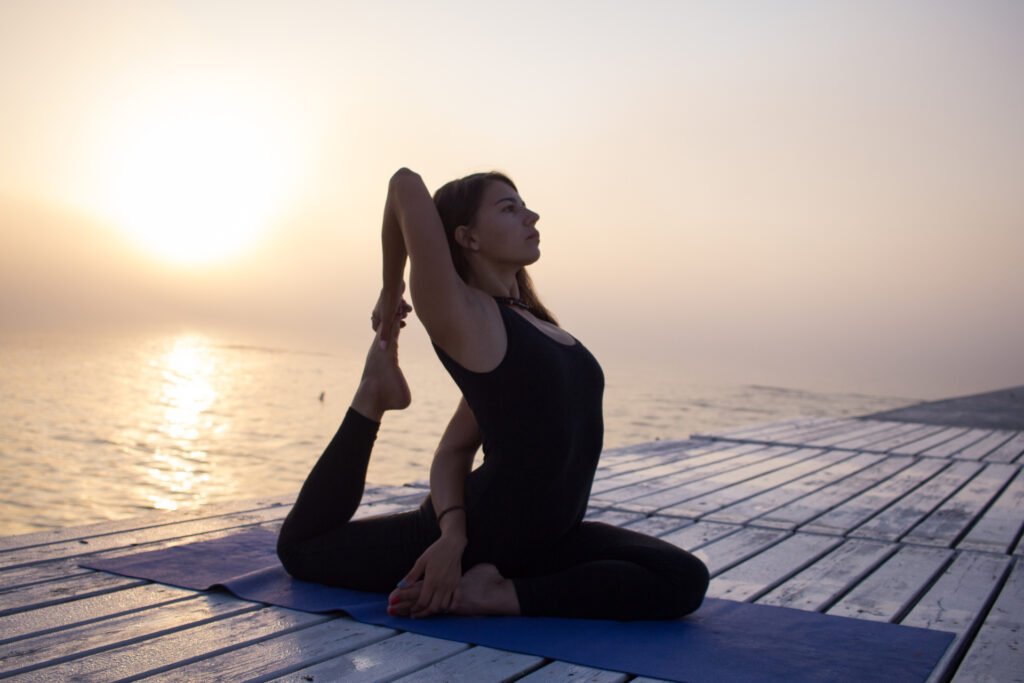- Stability and Mobility
- How Stability and Mobility Support Exercising for Longevity
- Retraining Movement for Lasting Health
- Effective Stability and Mobility Exercises for Longevity
- Strength
- Principles of Strength Training for Longevity
- Exercising for Longevity with Aerobic Capacity
- Exercising for Longevity with Anaerobic Capacity
- Incorporating Exercising for Longevity Into Your Daily Routine
- Staying Active at Any Age
- Making Exercise and Fitness a Lifelong Habit
If we think of life as our sport, we all become athletes in this lifelong game. With that mindset, it’s worth asking: how do we best train for the sport of life? The answer lies in a structured, intentional approach to exercise that addresses stability and mobility, strength, aerobic capacity, and anaerobic capacity, the four pillars of physical resilience and the impact of exercising for longevity.
At Agami Health, a leading Longevity Clinic, these principles are central to helping people extend not just their lifespan, but their healthspan, the years lived with vitality, strength, and independence. Exercise is more than just movement; it is a form of medicine, one that preserves function, prevents disease, and sharpens the mind as the years pass. By embracing the right training framework, you can equip yourself to thrive across every stage of life.
Stability and Mobility
Stability and mobility are the foundation upon which all other physical capacities are built. If we look at stability, this refers to the control of your joints and the ability to maintain proper posture and alignment during movement. Mobility, on the other hand, is the range of motion available at your joints. Together, they ensure that the body moves efficiently, reducing the risk of injury and chronic wear-and-tear.

How Stability and Mobility Support Exercising for Longevity
Mechanistically, stability and mobility engage the neuromuscular system, improving proprioception – the brain’s awareness of body position in space. This is crucial for balance, coordination, and the prevention of injuries, particularly as we age. It is an incredibly important aspect of exercising for longevity. Mobility work also supports joint health by maintaining synovial fluid circulation, which nourishes cartilage and reduces stiffness.
This is not just about preventing immobility in older age. Most people have already lost significant stability and mobility by the time they are in their 30s. In fact, the most common underlying cause (not diagnosis) of lower back pain is down to an inability to stabilise the spine through its range of motion. To do this, requires that we are able to activate the right muscular activation patterns to engage our core, create adequate pressure inside our abdomen and tighten the muscles that wrap around our torso when lifting things.
Retraining Movement for Lasting Health
Teaching and retraining in the art of movement is such a big part of our approach to healthy longevity at Agami Health. This is why we have our very own specialist trainer as part of our team who specialises in dynamic neuromuscular activation (DNS). This is a training and rehabilitation program that goes back to the basics and teaches you how to create functional movement efficiently and safely. These are key activities that elevate your performance and a key element in exercising for longevity.
Training for stability and mobility is about controlled, pain-free movement and joint health. The goal is not to stretch as far as possible or hold extreme positions but to develop controlled, pain-free movement patterns that support all other forms of exercise and movement needed for daily life.
Effective Stability and Mobility Exercises for Longevity
Aside from a more formal DNS programme, effective exercises include:
- Dynamic stretching and mobility flows: Move joints through their full range in a controlled manner (e.g., hip circles, shoulder rolls).
- Yoga or Pilates: Focuses on balance, flexibility, and controlled movement, with bonus benefits on stress and your cardiovascular system.
- Balance exercises: Single-leg stands, heel-to-toe walks, or stability ball exercises to improve joint control.
- Foam rolling and soft tissue work: Helps maintain tissue quality and joint ease. Aim for 10–20 minutes per day, or integrate mobility work into warm-ups and cooldowns.
Strength
Strength is more than just the ability to impressively lift heavy weights in the gym; it is the capacity of muscles to generate force, which underpins virtually every daily activity. It is the king of longevity focussed exercise. Whether it’s standing up from a seat or the floor, picking up your child or grandchild, or putting your small suitcase in the overhead bins on your flight. Muscle strength is a true longevity biomarker and necessary to thrive physically.
Grip strength has long been found to be strongly correlated with health outcome and longevity. This is not through some odd mechanism that being able to open a jar of pickles is going to stop you getting diseases. What it shows is that the consistent work required to achieve and maintain a strong grip (strength training and good nutrition) are key ingredients for overall health and preventing disease.

Principles of Strength Training for Longevity
Strength training should follow a few main principles:
- Quality of movement – learn the correct muscle activation patterns to perform a movement or lift safely first. Once you have this nailed down, start to progress the load.
- Progressive overload – it doesn’t matter where you start, progression is key. Consistency and discipline are enormous factors in success here.
- Get close to failure – most people who have not done resistance training a lot will not know what failure means or feels like. Failure means you are unable to complete even a single more repetition of your lift with good form and safe movement patterns
- Target all major muscle groups – but focus on the big compound exercises like squats, deadlifts, bench press, pull ups
One of the biggest barriers to resistance training is people don’t feel like they know what to do. Going for a run is pretty straightforward, everyone knows what to do. Resistance training however can require a fair bit of time, patience and dedication to learn the movement patterns correctly. However, when just starting out, there are many ways to help you minimise risk of injury.
A good way to approach this in the beginning is to strip things back to the basics. Bodyweight movements like squats, push-ups, lunges, and planks teach you the fundamental patterns without the added complexity of heavy loads. Again where needed, we support people to use DNS principles as outlined earlier to retrain their movement patterns for safe training.
Resistance bands or light dumbbells can then be introduced to gradually increase the challenge in a safe and controlled way. Many people also benefit from working with a trainer, following structured beginner programmes, or using machines at the gym, which provide more stability and guidance than free weights. By focusing on mastering form first, progressing slowly, and listening to your body, you can build confidence and reduce the likelihood of injury while laying a strong foundation for long-term strength training.
Exercising for Longevity with Aerobic Capacity
Training aerobic capacity is about improving your ability to sustain movement for extended periods without fatigue. The most effective way to do this is by spending regular time in what’s known as Zone 2 cardio – a moderate intensity where your heart rate is elevated, but you can still hold a conversation. This zone builds endurance, supports recovery, and lays the foundation for all other types of training. Walking briskly, cycling at a steady pace, or using a rowing machine are all good options.
A helpful target is around 150 minutes of Zone 2 work per week. That might look like 30 minutes of steady cardio five times a week, or longer sessions two to three times per week. If you enjoy data, a heart rate monitor can help you gauge your training zone more precisely, but the “talk test” works just as well – if you can speak in short sentences but not full long ones comfortably, you’re in Zone 2.
As your fitness improves, you can add variety by mixing in higher-intensity aerobic intervals (e.g. Zone 3 or 4) occasionally, but the bulk of your aerobic training should remain in Zone 2. It’s this steady, consistent form of exercising for longevity that pays the biggest dividends for long-term health and stamina.

Exercising for Longevity with Anaerobic Capacity
Anaerobic training focuses on short bursts of high-intensity effort where oxygen demand outpaces supply – what’s often referred to as Zone 5 training. This is the “all-out” zone where you can only sustain activity for 30–90 seconds at most. It’s trained through sprinting, hill climbs, interval circuits, or other efforts that push you close to your maximum.
A practical way to approach this is with interval training. For example, sprint hard for 30–45 seconds (Zone 5), then recover at an easy pace for 1–2 minutes. Repeat this for 6–10 rounds depending on your fitness level. What I love most about this area of training is how efficient the work outs can be. These sessions can be completed in 15–20 minutes and are highly effective without requiring a big time commitment.
Because Zone 5 training is intense, you only need it 1–2 times per week, and it should be balanced with your Zone 2 cardio and strength work. The key is to hit true intensity during the effort phase – you should feel like you couldn’t sustain it much longer – while also allowing enough recovery between bursts to repeat with quality. Done consistently, this sharpens both power and resilience, adding significant benefits of exercise for longevity.
Incorporating Exercising for Longevity Into Your Daily Routine
Making time for structured workouts is valuable, but when it comes to exercising for longevity, what you do outside the gym matters just as much. Everyday movement keeps your body resilient, reduces sedentary risk factors, and reinforces the four pillars of long-term health. At Agami Health’s Longevity Clinic, we emphasise that consistent daily activity, even in small amounts, builds the foundation for sustainable fitness and healthy ageing. By weaving movement into your routine, you transform exercise from something occasional into a lifestyle practice that supports vitality at any age.
Staying Active at Any Age
The science is clear, but the real challenge is making exercise a consistent part of your life. The good news is that you don’t need to overhaul your entire schedule to start reaping the benefits. Small, intentional choices compound over time. Take the stairs instead of the lift, walk or cycle for short trips, or use a standing desk to break up long periods of sitting. Even ten minutes of mobility work or a brisk walk after meals can have a powerful cumulative effect.
For those with busy schedules, layering movement into existing routines is often the most sustainable approach. Walk while on phone calls, stretch during TV time, or use short “exercise snacks” throughout the day, like a set of push-ups, squats, or a quick stair climb. These micro-sessions keep your body primed without requiring large blocks of free time.
Importantly, staying active doesn’t look the same for everyone. A 30-year-old might thrive on interval training and heavy lifting, while a 70-year-old might focus on walking, yoga, and light resistance bands. The key is finding movement that feels good, fits your life stage, and that you actually enjoy, because enjoyment is what keeps you coming back.
Making Exercise and Fitness a Lifelong Habit
Longevity is not about chasing short-term fitness gains, it is about building a relationship with movement that lasts decades. This means shifting the mindset from “working out” to “training for life.” Instead of exercising for aesthetics or as punishment after a big meal, think of exercising for longevity and how its a means of investing in your future self, your independence, vitality, and ability to keep doing the things you love.
Habits form when behaviours are simple, repeatable, and rewarding. Start small, anchor exercise to daily triggers such as brushing your teeth or your morning coffee, and celebrate consistency rather than intensity. Over time, movement becomes as routine as eating or sleeping, a non-negotiable part of your lifestyle.
Social accountability also makes a difference. Join a class, find a workout buddy, or set shared goals with friends or family. Community and connection not only keep you consistent, they also make the process more enjoyable.
At Agami Health, we recognise that these habits must evolve. As life circumstances, goals, or physical capacity change, so too should your approach to exercising for longevity. Our focus is on helping individuals adapt their routines in a way that keeps movement a lifelong ally, not a short-lived phase.
When embraced with this mindset, fitness stops being a chore or a checkbox. It becomes a cornerstone of your identity, a daily act of self-care that pays dividends across every decade of life. And that is how exercising for longevity transforms from a health intervention into a true longevity strategy.
